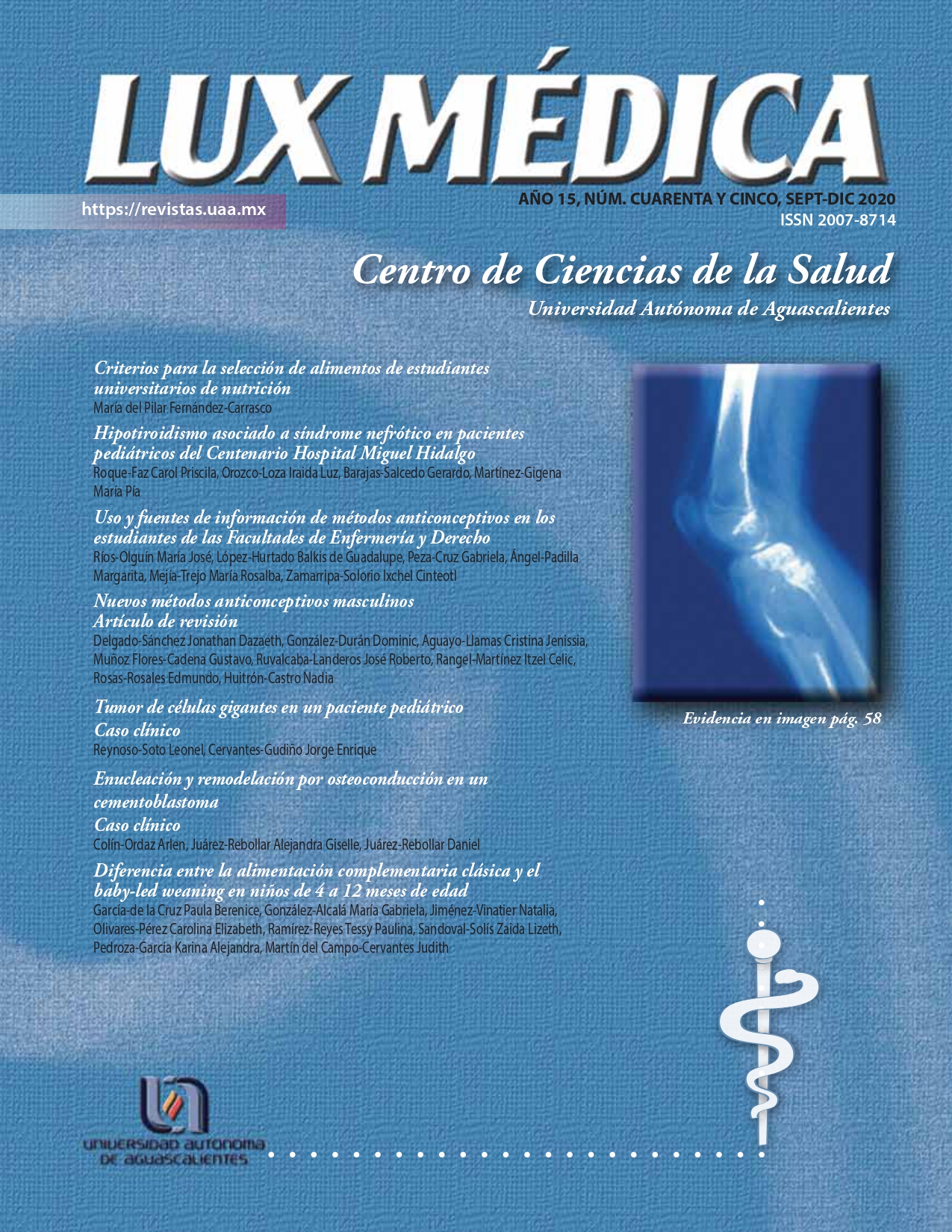Nuevos métodos anticonceptivos masculinos
DOI:
https://doi.org/10.33064/45lm20202870Keywords:
male contraceptives, male hormonal contraceptives, non-hormonal male contraceptivesAbstract
Introduction: Studies indicate that 50-71% of men would be interested in using a reversible contraceptive method. The search for a male hormonal contraceptive has been hampered by the lack of a safe and effective oral androgen that decreases, disrupts, or affects the quality of sperm. The study aims to review the new contraceptive methods to expand the perspective of the novelties in male contraception. Methods: An online literature search of the databases PubMed, EBSCO, BVS, Cochrane, UAA Search Engine, and Epistemonikos was performed using the following MeSH terms in Spanish and English: "male contraceptives,” "male hormonal contraceptives,” and "non-hormonal male contraceptives.” Results: Male hormonal contraceptives act on the hypothalamic-pituitary-testicular axis, which is responsible for stimulating steroidogenesis and spermatogenesis. Non-hormonal methods act at any point in spermatogenesis or on motility or transport. The reason behind non-hormonal contraceptives is to avoid the pituitary hypothalamic axis, potentially avoiding some side effects associated with hormones. We will review which contraceptives are considered hormonal methods and which are non- hormonal. Conclusion: The challenge of hormonal and non-hormonal male contraceptives is to demonstrate a strong safety proflle. Studies of male contraceptives in Latin American or Mexican populations are necessary. LUXMÉDICA AÑO 15, NÚMERO 45, SEPTIEMBRE-DICIEM- BRE 2020, PP 37-54.
Downloads
Downloads
Published
How to Cite
Issue
Section
License
La revista Lux Médica está bajo una licencia de Creative Commons Reconocimiento-NoComercial-Compartir Igual 4.0 Internacional.












